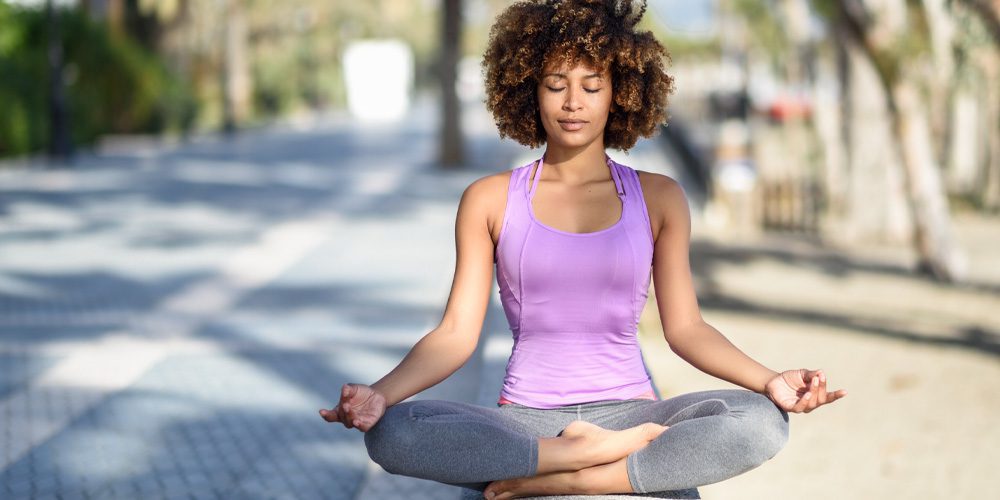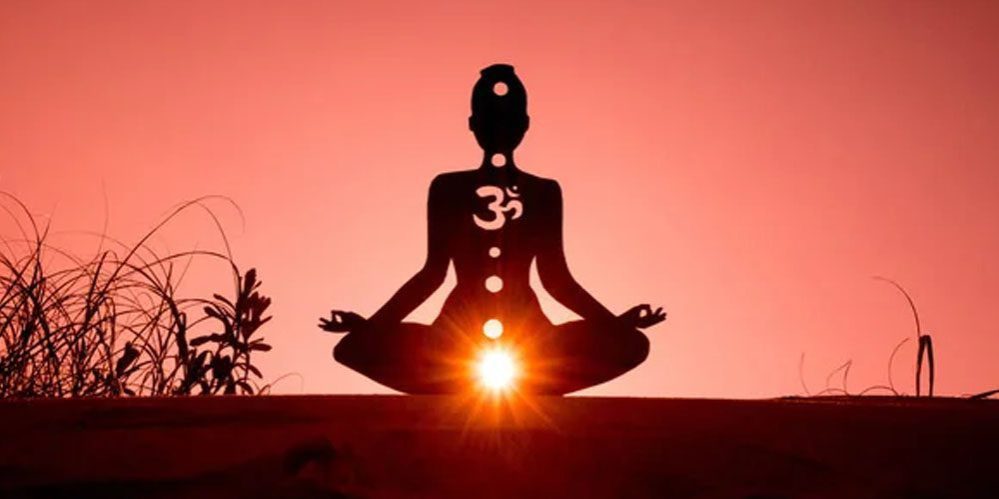Mindful movement, an ancient practice rooted in Eastern philosophies, encompasses the synergy of physical activity and mental awareness. It involves engaging in various exercises and activities with a deliberate focus on the present moment, connecting the mind and body in harmonious unison. Unlike traditional exercise routines where the mind may wander aimlessly or be preoccupied with external distractions, mindful movement encourages individuals to be fully present in each movement and embrace a sense of mindfulness.
Definition and Concept of Mindful Movement
Mindful movement can be defined as a conscious approach to physical activities that emphasizes intentional awareness throughout the process. It goes beyond the mere mechanical execution of exercises by incorporating mindfulness techniques such as deep breathing, meditation, body scanning, and sensory awareness into movements. This practice encourages individuals to cultivate an attentive state of mind that allows them to deeply connect with their bodies, sensations, emotions, thoughts, and surroundings.
The concept behind mindful movement stems from ancient practices like yoga and tai chi which have long recognized the profound connection between mental well-being and physical health. By integrating mindfulness into physical activities, individuals are able to elevate their level of consciousness during movement, heightening their overall experience while reaping numerous benefits for both body and mind.
Importance of Incorporating Mindfulness into Physical Activities
The incorporation of mindfulness into physical activities holds immense significance in today's fast-paced world. In our modern lives filled with deadlines, stressors, and constant distractions from technology, it is vital to carve out moments dedicated solely to being fully present in our own bodies. By infusing mindfulness into exercise routines or any form of physical activity – whether it is yoga sessions on a mat or simply taking a mindful walk outdoors – we create space for ourselves to slow down our racing thoughts.
This intentional focus on the present moment allows us to experience a sense of calmness and serenity, cultivating mental clarity and reducing stress levels. Moreover, incorporating mindfulness into physical activities helps foster a deeper mind-body connection.
By tuning in to our bodies during movements, we become more aware of our posture, alignment, breathing patterns, and the subtle sensations within. This heightened sense of body awareness not only enhances the effectiveness of our physical exercises but also reduces the risk of injuries by encouraging proper form and technique.
Benefits of Mindful Movement
Physical Benefits
Mindful movement not only nurtures the mind but also bestows numerous physical advantages. One of the key physical benefits is improved flexibility, strength, and balance. By engaging in mindful movement practices such as yoga or Tai Chi, you can gradually increase your body's range of motion and muscular strength.
As you become more attuned to your body's needs and limitations, you will notice a remarkable improvement in your flexibility over time. Strengthening exercises incorporated in mindful movement routines also lead to greater stability and balance, helping to prevent falls and injuries.
Furthermore, practicing mindful movement reduces the risk of injuries. By being present in each movement, you develop a heightened sense of proprioception – the awareness of your body's position in space – which allows you to move with precision while minimizing strain on vulnerable areas.
This heightened body awareness enables you to make conscious adjustments during exercises or physical activities, reducing the likelihood of accidents or overexertion. Moreover, engaging in mindful movement practices enhances body awareness and posture.
Through mindfulness techniques like focusing on breath awareness or mindful meditation during exercise sessions, you learn to pay attention to how each part of your body moves and aligns itself. This increased mindfulness translates into improved posture throughout daily life as well; with practice, proper alignment becomes more natural even when sitting at a desk or standing in line at the grocery store.
Mental and Emotional Benefits
In addition to its physical benefits, mindful movement positively impacts mental and emotional well-being. One notable advantage is stress reduction and improved mood. When fully present in the movements we perform during exercise or other activities like yoga or Pilates, we create space for stressors to fade away temporarily as attention shifts inward.
Mindful movement acts as a form of moving meditation that offers solace from daily pressures while improving overall mental well-being. As endorphins are released during physical activity, a sense of euphoria and calm washes over us, leading to a boost in mood and emotional resilience.
Furthermore, mindful movement increases focus and concentration. By redirecting attention to the present moment, we train our minds to stay focused on the task at hand.
Whether it's holding a yoga pose or executing precise movements in Tai Chi, mindful movement requires concentration that can carry over into other areas of life. This increased ability to sustain focus improves productivity and efficiency in daily tasks or work-related activities.
Engaging in mindful movement supports the promotion of overall well-being. The combination of physical activity and mindfulness practices nurtures both body and mind holistically.
Not only do you gain physical strength and flexibility but also cultivate mental clarity and emotional balance. Regular practice fosters self-awareness, self-compassion, and an improved sense of overall well-being.
Incorporating mindful movement into your daily routine can have a profound impact on various aspects of your life. The physical benefits include enhanced flexibility, strength, balance, reduced injury risk as well as improved body awareness and posture.
On the mental-emotional front, practicing mindful movement facilitates stress reduction, mood improvement, and enhanced focus-concentration abilities while promoting an all-encompassing state of well-being. With these remarkable advantages awaiting those who embark on this journey towards mindfulness through movement practices such as yoga or Tai Chi; there is no better time than now to start reaping these rewards for yourself!
Various Forms of Mindful Movement
Yoga: Origins, Styles, and Asanas
Yoga, a practice originating from ancient India, has gained immense popularity worldwide for its holistic approach to physical and mental well-being. Rooted in the philosophy of unity and self-discovery, yoga combines physical postures (asanas), breath control (pranayama), and meditation to cultivate mindfulness. Various styles of yoga exist, each with its own emphasis and pace.
Hatha yoga focuses on alignment and holding postures for longer durations, while Vinyasa yoga synchronizes movement with breath in a flowing sequence. Ashtanga yoga follows a set series of dynamic poses that build strength and endurance.
Regardless of the style chosen, specific asanas play a vital role in fostering mindfulness during yoga practice. The mountain pose (Tadasana) promotes grounding and centeredness by focusing on alignment and balance.
The Warrior II pose (Virabhadrasana II) cultivates both strength and mindfulness by encouraging presence in the present moment while holding a powerful stance. The tree pose (Vrikshasana) requires concentration to maintain balance while strengthening leg muscles.
Tai Chi: History, Principles, and Mindfulness
Tai Chi originated in China as a martial art but has evolved into a graceful form of mindful movement celebrated for its health benefits. It combines slow, deliberate movements with deep breathing techniques to enhance body awareness and encourage mental focus. Tai Chi is rooted in principles such as relaxation, circular movements for energy flow (qi), mind-body connection, and balance.
The basic movements or forms in Tai Chi are designed to engage the entire body gently while promoting relaxation. These forms include the “Grasp Sparrow's Tail,” where practitioners perform flowing hand movements combined with weight shifts between legs to enhance stability; the “White Crane Spreads Its Wings,” which emphasizes coordination and flexibility through extended arm movements; and the “Cloud Hands,” a continuous flowing motion that cultivates mindfulness by encouraging concentration on body alignment and breath.
Pilates: Evolution, Principles, and Mindful Core Exercises
Pilates, developed by Joseph Pilates in the early 20th century, focuses on core strength, flexibility, and body control. This mind-body exercise method has gained popularity for its ability to improve posture, enhance muscle tone, and develop body awareness.
The principles of Pilates include concentration, precision, centering, control, breath, and flow. To cultivate mindfulness in Pilates practice, specific core exercises target the deep muscles of the abdomen and lower back.
The Hundred involves engaging the abdominal muscles while holding a V-shaped position with simultaneous arm movements. The Roll-Up challenges both core strength and flexibility as practitioners roll up from lying flat to a seated position while maintaining controlled movement.
Another effective exercise is the Plank pose (also known as “The Teaser”), which requires engaging the entire core while balancing on forearms or hands. Breathing techniques play a significant role in enhancing mindfulness during Pilates sessions.
Practicing lateral breathing involves inhaling deeply into the ribcage and exhaling fully to promote relaxation and focus. Coordinating breath with each movement helps synchronize body awareness with mental presence throughout the workout.
By incorporating these various forms of mindful movement into our lives – whether through yoga's ancient wisdom, Tai Chi's graceful flow of energy or Pilates' precise core exercises – we can cultivate greater mindfulness within ourselves. Each practice offers unique benefits for both physical health and mental well-being while encouraging us to be fully present in each moment of our journey toward holistic wellness.
Mindful Movement in Everyday Life
Mindful Walking: Embracing Each Step with Awareness
Picture this: the gentle caress of the morning breeze on your skin as you take deliberate, mindful steps along a serene pathway. Mindful walking invites us to slow down and appreciate the simple act of putting one foot in front of the other. To fully immerse yourself in this experience, start by grounding yourself.
Feel the weight of your body distributed evenly across each foot as it makes contact with the ground. Then, shift your attention to your breath, synchronizing it with your steps.
With each inhalation and exhalation, notice how your body moves and find a rhythm that feels natural to you. This intentional focus brings about mental clarity and a sense of calm.
The benefits of mindful walking extend far beyond physical fitness alone. By engaging our senses fully in each step, we are able to cultivate a heightened state of awareness that carries over into our daily lives.
This practice becomes an opportunity to let go of distractions and worries as we connect deeply with ourselves and the world around us. As stress melts away with every stride, we open ourselves up to new perspectives and find solace amidst life's chaos.
Mindful Stretching: A Ritual for Mind-Body Connection
Stretching is often seen as a necessary warm-up or cool-down before or after physical activity. However, by incorporating mindfulness into our stretching routine, we can transform it into a sacred ritual for self-care and relaxation.
Begin by finding a quiet space where you can dedicate uninterrupted time to this practice. As you settle into position, bring your attention inward and tune in to sensations within your body.
Allow yourself to be fully present in each stretch—notice how muscles lengthen and release tension with every gentle movement you make. Pay special attention to your breath; inhale deeply as you prepare for the stretch, and exhale slowly as you ease into it.
With each exhalation, let go of any physical or mental tension, allowing your body to surrender and relax. This mindful approach to stretching not only increases flexibility and reduces the risk of injury but also promotes a sense of calm and tranquility.
Mindful Exercise Routines: Harnessing the Power of Mind-Body Integration
Exercise is not merely about physical exertion; it can be an opportunity to nourish our minds and souls as well. By infusing mindfulness into our cardio or strength training regimen, we create space for a deeper mind-body connection.
Consider incorporating these tips into your exercise routine: 1. Set an intention: Before beginning your workout, take a moment to set a clear intention for what you hope to achieve or experience during this time.
It could be cultivating gratitude, finding joy in movement, or simply embracing the present moment. 2. Focus on breath: Throughout your workout, anchor your attention on the rhythm of your breath.
Let it guide you through each movement, syncing inhales and exhales with different exercises. 3. Tune in to sensations: Instead of mindlessly going through the motions, bring awareness to how your body feels with each movement—muscles engaged, heart rate elevated, sweat trickling down your brow.
Embrace these sensations wholeheartedly. 4. Embrace mindfulness breaks: Take short breaks during longer workouts to pause and reconnect with yourself.
Close your eyes briefly if possible and bring your attention back to your breath or perform gentle stretches to release any tension. By integrating mindfulness into our exercise routines in this way, we elevate our workouts from mere physical exertion to transformative experiences that nurture both body and mind.
Mindful Movement is Within Reach Incorporating mindful movement practices into everyday life need not be complicated or time-consuming; it simply requires intentionality and a willingness to engage with the present moment.
As you embark on your journey towards a more mindful existence, remember that each step, stretch, and workout can become an opportunity for self-discovery and inner peace. So, take a deep breath, embrace the beauty of each movement, and let mindfulness infuse every aspect of your life.
Understanding the Neurobiology of Mindful Movement
Engaging in mindful movement goes beyond the physical benefits. It also has a profound impact on our brain and nervous system.
Studies have shown that practicing mindful movement activates various regions of the brain, including the prefrontal cortex, which is responsible for decision-making and emotional regulation. This activation leads to an increase in gray matter density, resulting in enhanced cognitive function and emotional well-being.
The Role of Mindfulness in Stress Reduction
When it comes to stress reduction, mindfulness plays a crucial role. Engaging in activities like yoga or Tai Chi stimulates the relaxation response by activating the parasympathetic nervous system and dampening down the body's stress response.
This helps lower cortisol levels, reduce blood pressure, and promote an overall sense of calmness. Additionally, mindful movement practices train individuals to stay present and non-judgmental, allowing them to approach challenging situations with greater resilience.
The Power of Mind-Body Connection
One fascinating aspect of mindful movement is its ability to strengthen the mind-body connection. As we cultivate awareness during physical activities, we become more attuned to bodily sensations and movements.
This integration enhances proprioception—the ability to perceive where our body is in space—and leads to improved coordination, balance, and postural alignment. Furthermore, research suggests that a strong mind-body connection can positively impact mental health by reducing symptoms of anxiety or depression.
The Benefits Beyond the Mat
The benefits gained from practicing mindful movement extend far beyond our yoga mats or exercise routines. Regular engagement in these practices fosters neuroplasticity—the brain's ability to reorganize itself—and promotes long-term changes that influence our daily lives.
Réflexions finales
The science behind mindful movement reveals the profound impact it has on our physical and mental well-being. By understanding the neurobiology, stress reduction potential, and mind-body connection associated with these practices, we can fully appreciate their transformative power.
Embracing mindful movement is not only beneficial for our bodies but also empowers us to live more present and fulfilling lives. So let's embark on this journey of self-discovery and embrace the wonders that mindful movement brings.
















